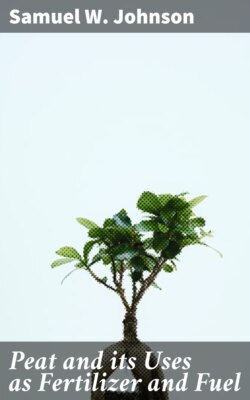Читать книгу Peat and its Uses as Fertilizer and Fuel - Samuel W. Johnson - Страница 3
На сайте Литреса книга снята с продажи.
INTRODUCTION.
ОглавлениеTable of Contents
In the years 1857 and 1858, the writer, in the capacity of Chemist to the State Agricultural Society of Connecticut, was commissioned to make investigations into the agricultural uses of the deposits of peat or swamp muck which are abundant in this State; and, in 1858, he submitted a Report to Henry A. Dyer, Esq., Corresponding Secretary of the Society, embodying his conclusions. In the present work the valuable portions of that Report have been recast, and, with addition of much new matter, form Parts I. and II. The remainder of the book, relating to the preparation and employment of peat for fuel, &c., is now for the first time published, and is intended to give a faithful account of the results of the experience that has been acquired in Europe, during the last twenty-five years, in regard to the important subject of which it treats.
The employment of peat as an amendment and absorbent for agricultural purposes has proved to be of great advantage in New-England farming.
It is not to be doubted, that, as fuel, it will be even more valuable than as a fertilizer. Our peat-beds, while they do not occupy so much territory as to be an impediment and a reproach to our country, as they have been to Ireland, are yet so abundant and so widely distributed—occurring from the Atlantic to the Missouri, along and above the 40th parallel, and appearing on our Eastern Coast at least as far South as North Carolina[1]—as to present, at numberless points, material, which, sooner or later, will serve us most usefully when other fuel has become scarce and costly.
The high prices which coal and wood have commanded for several years back have directed attention to peat fuel; and, such is the adventurous character of American enterprise, it cannot be doubted that we shall rapidly develop and improve the machinery for producing it. As has always been the case, we shall waste a vast deal of time and money in contriving machines that violate every principle of mechanism and of economy; but the results of European invention furnish a safe basis from which to set out, and we have among us the genius and the patience that shall work out the perfect method.
It may well be urged that a good degree of caution is advisable in entering upon the peat enterprise. In this country we have exhaustless mines of the best coal, which can be afforded at a very low rate, with which other fuel must compete. In Germany, where the best methods of working peat have originated, fuel is more costly than here; and a universal and intense economy there prevails, of which we, as a people, have no conception.
If, as the Germans themselves admit, the peat question there is still a nice one as regards the test of dollars and cents, it is obvious, that, for a time, we must "hasten slowly." It is circumstances that make peat, and gold as well, remunerative or otherwise; and these must be well considered in each individual case. Peat is the name for a material that varies extremely in its quality, and this quality should be investigated carefully before going to work upon general deductions.
In my account of the various processes for working peat by machinery, such data as I have been able to find have been given as to cost of production. These data are however very imperfect, and not altogether trustworthy, in direct application to American conditions. The cheapness of labor in Europe is an item to our disadvantage in interpreting foreign estimates. I incline to the belief that this is more than offset among us by the quality of our labor, by the energy of our administration, by the efficiency of our overseeing, and, especially, by our greater skill in the adaptation of mechanical appliances. While counselling caution, I also recommend enterprise in developing our resources in this important particular; knowing full well, however, that what I can say in its favor will scarcely add to the impulse already apparent among my countrymen.
"Samuel W. Johnson.
Sheffield Scientific School, Yale College, June, 1866.
